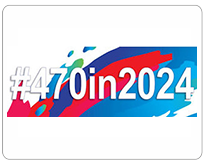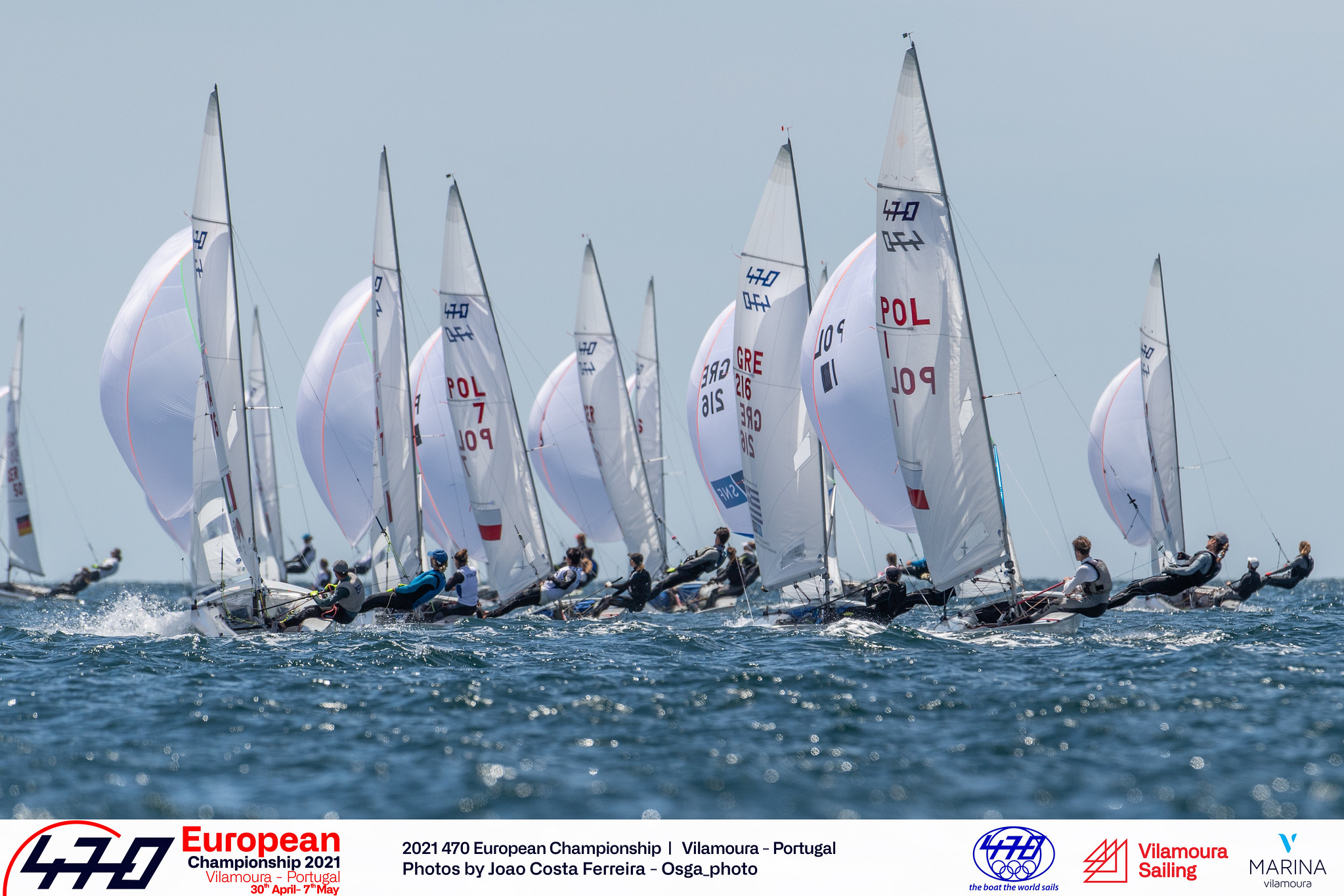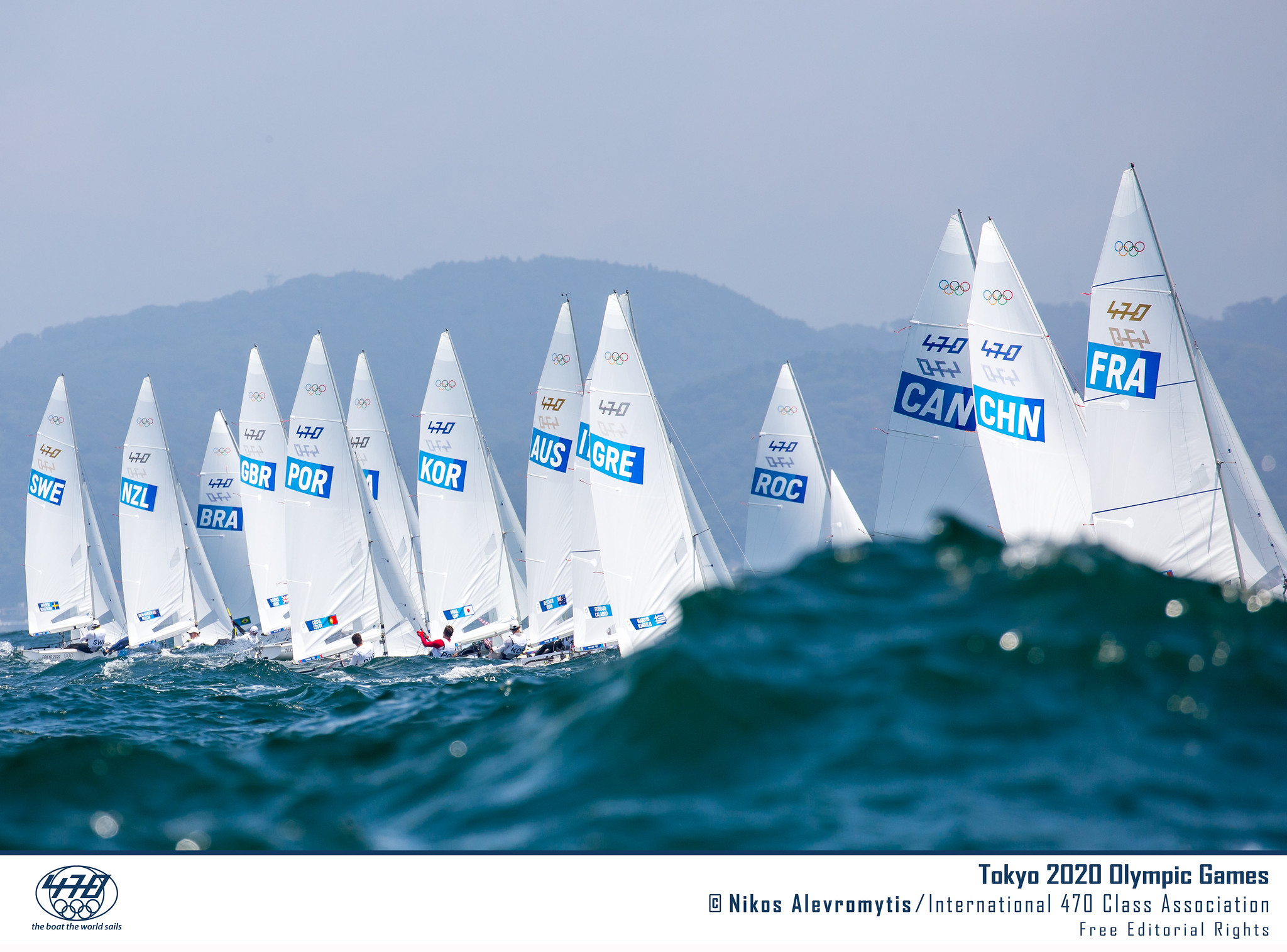470 IN 2024 - WHY SAIL THE 470?
THE REAL REASON ANYONE SAILS A 470 IS BECAUSE IT IS ACCESSIBLE AND BECAUSE OF THE CHALLENGES IT PRESENTS ...
The 470 is the equipment used for the Men and Women's Two Person Dinghy event at the Olympic Games. For the 2024 Olympic Games, the 470 will be aiming for selection for the new Mixed Two-Person Dinghy Event.
Our World Championships usually attract more than 130 boats.
470 men usually weigh between 60-80 kg with women around 50-73 kg. The class was designed in 1963 by Frenchman Andre Cornu. It made its first appearance at Olympic Games at Montreal in 1976 as an open gender event, remaining so until it was split into seperate men's and women's events in Seoul 1988.
The class is renowned for its close racing, and is known as the most technical class in the Olympic Games. But no one sails a 470 just because they like fiddling with little ropes, nuts and bolts instead of sailing. The real reason anyone sails a 470 is because of the challenges it presents.
All the options available are a lot to get your head around. The 470 has no set position for the mast step, no set lengths for the stays, typically sets up with adjustable spreaders and allows for variations in sail and foil design. A 470 skipper has lines controlling the mainsheet, traveller, vang, cunningham, jib car position, centreboard and rig tension at their side. The foremost challenge of sailing a 470 is understanding the tuning and set up of the boat, then being able to balance making changes in the boat with sailing fast and racing.
Its next challenge lies in setting up with a symmetrical spinnaker and the class rules suspending Rule 42 to allow kinetics when the breeze is greater than eight knots. Sailing with a spinnaker on a moving pole opens up an array of downwind angles, ranging from close reaching to soaking deep by the lee. Imagine coming around the top mark and seeing the boats around you fly off in different directions with no idea which way will prove to be fastest. The best 470 sailors have an arsenal of downwind styles available and are able to switch in and out of them to not only stay fast, but to race smart as well.
Open up every downwind angle and you open up an array of pumping and ooching styles, meaning that 470 sailors are literally forcing their boats downwind faster than they want to go. A significant development over the last Olympic cycle has been the refining of the upwind pumping, with many crews now unhooking from the wire in early trapezing conditions to use their full force to pump the rig in a manner similar to a bird flapping its wings. It is not unusual to see see a fleet of 470s starting in around 10 knots with all of their sails beating like windsurfers.
The 470 isn't a boat you can just buy in a box. It isn't a boat with magic go fast numbers or equipment. The range available means that the sailors have to spend the time to develop and understand their own styles, techniques and equipment to get to the top. It is fascinating to observe the different personalities, ranging from the avid tuners to the ballpark set and forgetters, interacting in the boat park before a race. Like all Olympic classes, the 470 is a class you need to devote a significant amount of time and energy to before you start to master it. But as you get closer, you get a lot of satisfaction feeling every little advance in speed and technique coming together.
Like and share our 470 Video telling the story of 470 Sailing below and at https://www.facebook.com/470olympicsailing/videos/10154880095879301/












































































